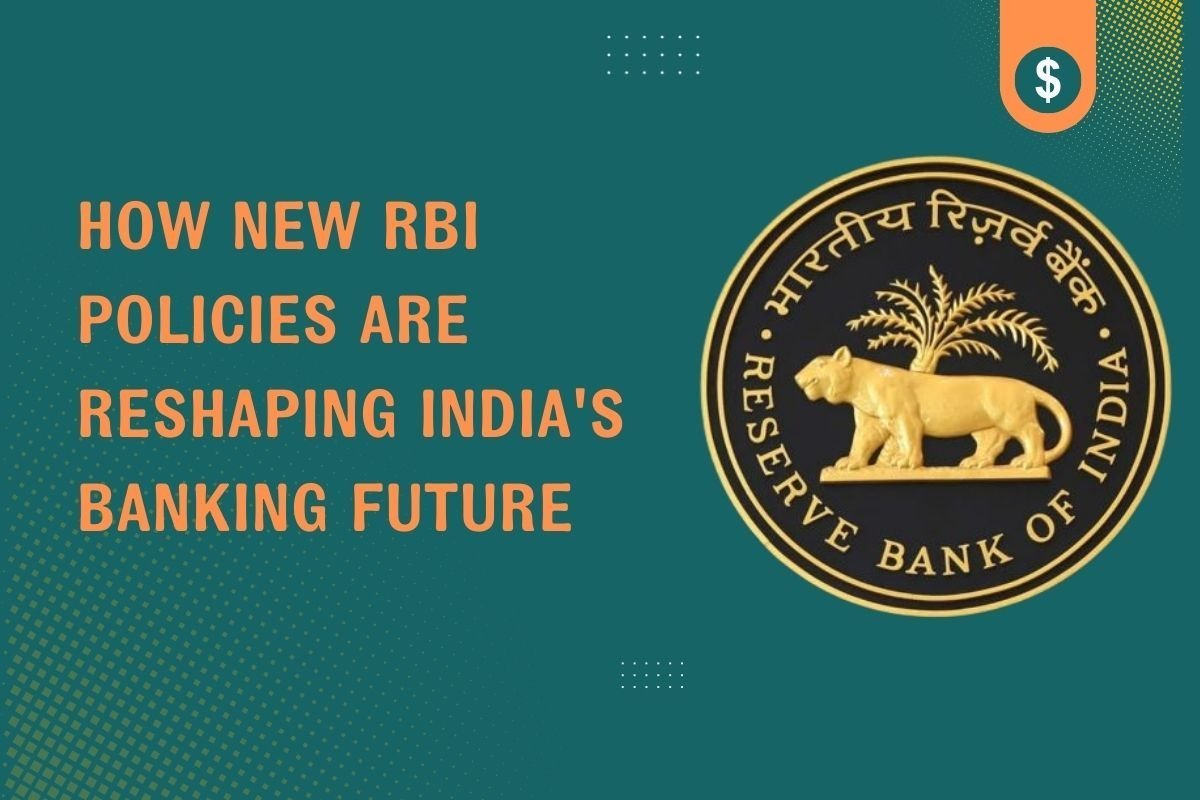India’s banking and financial landscape is undergoing a significant transformation in 2025, driven by rapid digitalization, evolving regulatory frameworks, and a growing emphasis on financial inclusion. As the backbone of the country’s financial system, the Reserve Bank of India (RBI) plays a pivotal role in ensuring stability, fostering innovation, and safeguarding consumer interests.
In response to shifting economic dynamics, the RBI policies 2025 introduce comprehensive reforms affecting banks, Non-Banking Financial Companies (NBFCs), fintech startups, and investors. These regulatory changes aim to strike a balance between innovation and risk management while strengthening India’s position as a global financial hub.
This article delves into the key drivers behind these policy shifts, the major regulatory updates, their impact on various stakeholders, and the opportunities they present. From digital banking regulations and lending norms to cybersecurity mandates and financial inclusion initiatives, we explore how RBI policies 2025 are set to reshape the Indian banking sector and define the future of financial services in the country.
The Driving Forces Behind RBI’s New Policy Initiatives
The RBI policies 2025 are a response to evolving economic conditions, technological advancements, and the need for greater financial inclusivity. These policies aim to address key challenges while positioning the Indian banking sector for sustainable growth and global competitiveness.
1. Economic Recovery & Financial Stability
India’s post-pandemic recovery has necessitated a recalibration of monetary policies to strike a balance between inflation control and economic growth. With global uncertainties affecting capital flows and trade, RBI policies 2025 emphasize liquidity management, interest rate adjustments, and measures to curb inflation while ensuring financial system stability. The central bank’s approach is designed to safeguard economic resilience while fostering long-term investor confidence in the Indian banking sector.
2. Digital Transformation
The rapid rise of fintech startups, digital banking, and AI-driven financial services has reshaped consumer expectations. RBI is tightening regulations around digital lending, Buy Now, Pay Later (BNPL) models, and fintech partnerships with traditional banks to ensure responsible innovation. Expanding the Unified Payments Interface (UPI) ecosystem and enabling seamless cross-border transactions are key elements of RBI policies 2025, reinforcing India’s leadership in digital financial services.
3. Financial Inclusion
Despite strong economic growth, a significant portion of India’s population remains underserved by formal financial institutions. The Indian banking sector is being encouraged to expand rural banking services, supported by digital KYC norms and Aadhaar-based authentication. The revised Priority Sector Lending (PSL) guidelines under RBI policies 2025 mandate higher credit allocations to Micro, Small, and Medium Enterprises (MSMEs), empowering small businesses and enhancing credit accessibility in underserved regions.
4. Cybersecurity & Data Protection
As digital transactions surge, so do concerns over cyber fraud, data breaches, and financial crimes. To address these risks, RBI policies 2025 introduce a robust cybersecurity framework for banks and NBFCs, focusing on AI-driven fraud detection, stricter compliance mandates, and data localization norms under India’s Digital Personal Data Protection Act. These measures ensure that customer data privacy remains a top priority while fostering trust in the evolving digital banking ecosystem.
By addressing these critical areas, RBI policies 2025 are laying the foundation for a resilient, inclusive, and technologically advanced Indian banking sector. The next section explores the key policy changes shaping this transformation.
Key RBI Policies and Their Impact
The RBI policies 2025 introduce sweeping reforms that impact digital banking, NBFCs, lending norms, liquidity management, cybersecurity, and financial inclusion. These policies aim to enhance regulatory oversight while ensuring the Indian banking sector remains resilient, competitive, and innovation-driven.
3.1 Digital Banking & Fintech Regulations
The rise of digital-only banks and fintech-driven financial services has necessitated a structured regulatory framework to mitigate risks and enhance consumer trust.
- New Digital Banking Framework: RBI has introduced licensing and operational guidelines for digital-only banks, ensuring they adhere to capital adequacy norms, risk assessment protocols, and consumer protection standards. These regulations promote responsible digital banking growth within the Indian banking sector.
- Impact on Fintech Startups: Stricter compliance measures are now in place for digital lending apps, BNPL (Buy Now, Pay Later) models, and digital wallets to curb unregulated lending practices and improve transparency. RBI policies 2025 emphasize borrower protection, mandating clear disclosure of loan terms and interest rates.
- UPI Expansion: The National Payments Corporation of India (NPCI) is driving enhancements in the Unified Payments Interface (UPI), including credit transactions, cross-border payments, and deeper fintech-bank integrations. These changes further reinforce India’s leadership in digital financial services.
3.2 Stricter NBFC & Lending Norms
To improve financial stability, RBI policies 2025 impose more rigorous oversight on NBFCs and digital lenders.
- Revised NBFC Classification: Increased capital adequacy norms and a shift towards risk-based supervision ensure that NBFCs operate with greater financial prudence, reducing systemic risks within the Indian banking sector.
- Digital Lending Guidelines: The crackdown on unregulated digital lenders includes borrower protection measures, stricter Know Your Customer (KYC) requirements, and enhanced transparency in loan disbursals and repayment structures.
- Impact on Microfinance Institutions (MFIs): The new norms seek to balance small-ticket lending growth while preventing over-indebtedness among low-income borrowers. NBFC-MFIs must adhere to responsible lending guidelines, ensuring better consumer safeguards.
3.3 Interest Rate & Liquidity Management
The RBI’s monetary policy stance in 2025 aims to balance inflation control with economic growth.
- Monetary Policy Adjustments: Through controlled repo rate changes, RBI policies 2025 focus on stabilizing inflation while supporting economic expansion.
- Changes in Repo Rate, CRR, and SLR: Adjustments to the Cash Reserve Ratio (CRR) and Statutory Liquidity Ratio (SLR) impact banks’ lending capacity and deposit rates, influencing overall credit flow in the economy.
- Impact on Credit Availability: Policy shifts affect home loans, business credit, and consumer borrowing, with higher interest rates potentially slowing credit growth but ensuring financial stability.
3.4 Cybersecurity & Data Protection Mandates
As digital transactions surge, RBI policies 2025 emphasize cybersecurity resilience and data privacy in the Indian banking sector.
- New Cybersecurity Framework: Banks and NBFCs must implement AI-driven fraud detection mechanisms, multi-factor authentication, and secure digital banking channels to prevent cyber threats.
- Guidelines for AI-Driven Banking Services: RBI mandates responsible AI use in risk assessment, credit scoring, and automated financial decision-making to prevent algorithmic biases and unethical lending practices.
- Data Localization Norms: Compliance with India’s Digital Personal Data Protection Act requires financial institutions to store sensitive customer data within India, ensuring stronger regulatory oversight and consumer security.
3.5 Financial Inclusion & Priority Sector Lending (PSL)
Expanding financial access remains a key priority under RBI policies 2025.
- New Rural Banking Targets: RBI has mandated increased banking penetration in underserved regions, ensuring financial services reach remote and unbanked populations.
- Digital KYC & Aadhaar-Based Authentication: Streamlined KYC processes enhance access to financial services while implementing safeguards against identity fraud.
- MSME Credit Boost: Revised Priority Sector Lending (PSL) norms allocate higher credit flows to Micro, Small, and Medium Enterprises (MSMEs), strengthening entrepreneurship and small business growth.
With these regulatory updates, RBI policies 2025 are setting the foundation for a more secure, inclusive, and technology-driven Indian banking sector.
Challenges & Concerns for Banks, NBFCs, and Fintechs
While RBI policies 2025 aim to enhance financial stability and innovation, they also introduce significant challenges for banks, NBFCs, and fintech startups. Stricter compliance norms, regulatory friction, and global competitiveness concerns pose hurdles for financial institutions operating within the evolving Indian banking sector.
1. Increased Compliance Costs
The implementation of stringent RBI policies 2025 has led to higher compliance costs for banks, NBFCs, and fintech firms. Regulatory requirements such as enhanced capital adequacy norms, strict digital lending guidelines, and cybersecurity mandates require financial institutions to invest heavily in compliance infrastructure, risk assessment models, and AI-driven fraud detection systems.
- Impact on Smaller NBFCs & Fintechs: While larger banks may absorb these costs, smaller NBFCs and fintech startups face financial strain in meeting regulatory expectations.
- Operational Adjustments: Many financial institutions are restructuring their internal compliance teams and adopting RegTech (Regulatory Technology) solutions to automate compliance processes, thereby reducing long-term costs.
2. Balancing Innovation & Regulation
The rapid growth of fintech startups and digital financial services has fueled regulatory concerns over data security, transparency, and risk management. RBI policies 2025 seek to strike a balance between fostering financial innovation and ensuring consumer protection.
- Friction Between Fintechs & Regulators: While fintech startups drive financial inclusion and digital transformation, increased regulatory scrutiny—such as stricter norms for BNPL (Buy Now, Pay Later) models and digital lending platforms—creates operational challenges.
- Ensuring Fair Competition: Traditional banks argue that fintech players should be subject to the same compliance standards to maintain a level playing field. Conversely, fintech firms contend that excessive regulation stifles innovation and limits their ability to offer agile financial solutions.
3. Global Competitiveness
The Indian banking sector must navigate global financial trends while aligning with domestic regulatory changes. RBI policies 2025 play a crucial role in positioning Indian banks and fintech firms on the international stage.
- Foreign Investment & Market Positioning: Stricter data localization norms and enhanced compliance measures may impact foreign investment inflows. However, a well-regulated financial ecosystem could bolster investor confidence in India’s financial stability.
- Comparative Regulatory Landscape: While India strengthens its financial regulations, global competitors such as the US, UK, and Singapore continue to adopt flexible fintech-friendly policies. Striking the right balance between regulatory oversight and market competitiveness is key to ensuring India remains an attractive destination for financial innovation.
Despite these challenges, RBI policies 2025 are expected to create a more resilient Indian banking sector, capable of balancing regulatory compliance with sustainable growth.
Opportunities & The Road Ahead
Despite the challenges posed by RBI policies 2025, these reforms are unlocking new opportunities for banks, NBFCs, and fintech companies. Strengthened regulatory oversight, digital transformation, and financial inclusion initiatives are paving the way for a more resilient and competitive Indian banking sector.
1. Strengthening Investor Confidence
A well-regulated financial ecosystem enhances investor trust, making India a more attractive destination for Foreign Direct Investment (FDI) in banking and fintech.
- Stability-Focused Approach: RBI policies 2025 prioritize financial stability, reducing risks associated with unregulated lending and data security concerns. This reassures institutional investors and venture capitalists looking to invest in the Indian banking sector.
- Foreign Investment Growth: With a structured regulatory framework, India is witnessing increased FDI inflows into banking, digital lending, and payment infrastructure, reinforcing the country’s position as a global financial powerhouse.
2. Expansion of Digital Banking & UPI-Driven Innovations
The rise of digital banking and the continued evolution of Unified Payments Interface (UPI) present significant growth opportunities.
- Neobanks & Payment Aggregators: The introduction of a structured digital banking framework under RBI policies 2025 has created a fertile ground for neobanks, digital lending platforms, and payment aggregators to expand their services.
- Cross-Border UPI Transactions: The integration of UPI with international payment systems is set to enhance global remittance flows, positioning India as a leader in digital financial transactions.
3. RegTech & Compliance Tech Adoption
With increasing regulatory complexity, financial institutions are turning to RegTech (Regulatory Technology) and Compliance Tech to streamline compliance processes and mitigate risks.
- AI-Driven Compliance Solutions: Companies are leveraging artificial intelligence (AI) to automate risk assessments, fraud detection, and regulatory reporting. This not only reduces operational costs but also ensures adherence to RBI policies 2025 in real-time.
- Improving Regulatory Efficiency: Adoption of digital compliance solutions helps financial institutions manage evolving regulatory requirements without disrupting their innovation strategies.
4. India as a Global Fintech Hub
India’s proactive regulatory approach and digital infrastructure are positioning it as a dominant player in the global fintech landscape.
- Government & RBI Support: Policy measures supporting digital banking, data security, and financial inclusion contribute to India’s rise as a fintech leader.
- Global Partnerships & Expansion: Indian fintech startups are expanding internationally, leveraging homegrown expertise in digital payments and AI-driven banking solutions. The Indian banking sector is increasingly being recognized for its ability to drive financial innovation at scale.
The RBI policies 2025 mark a transformative shift in the Indian banking sector, reinforcing stability while fostering digital innovation. By embracing regulatory advancements, leveraging AI-driven compliance tools, and capitalizing on fintech growth, financial institutions can navigate these changes effectively. As India cements its position as a global fintech hub, the road ahead presents immense opportunities for banks, NBFCs, and investors to thrive in a digitally empowered and well-regulated financial ecosystem.






